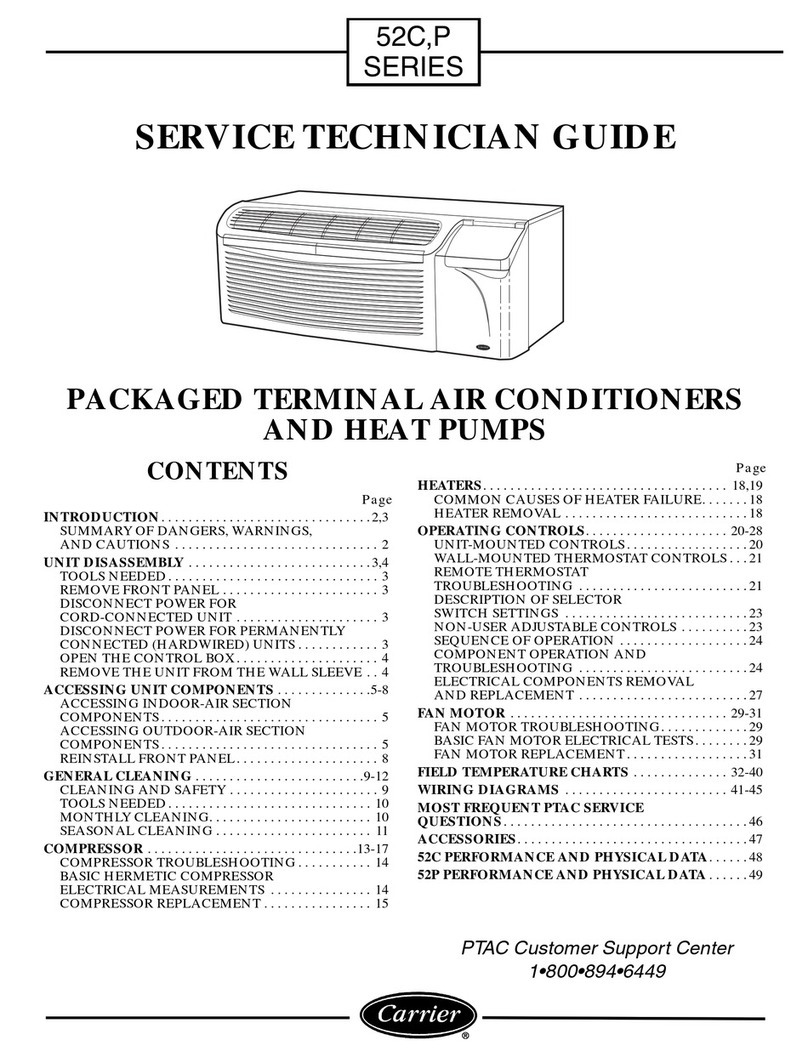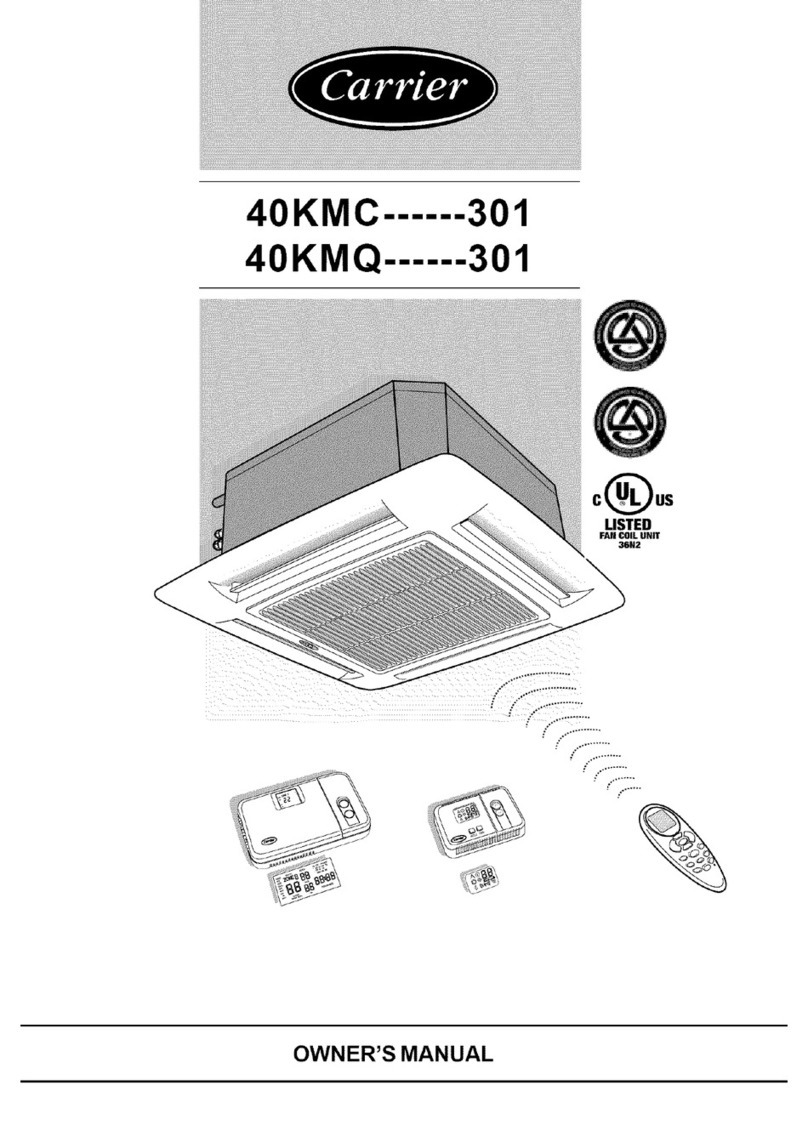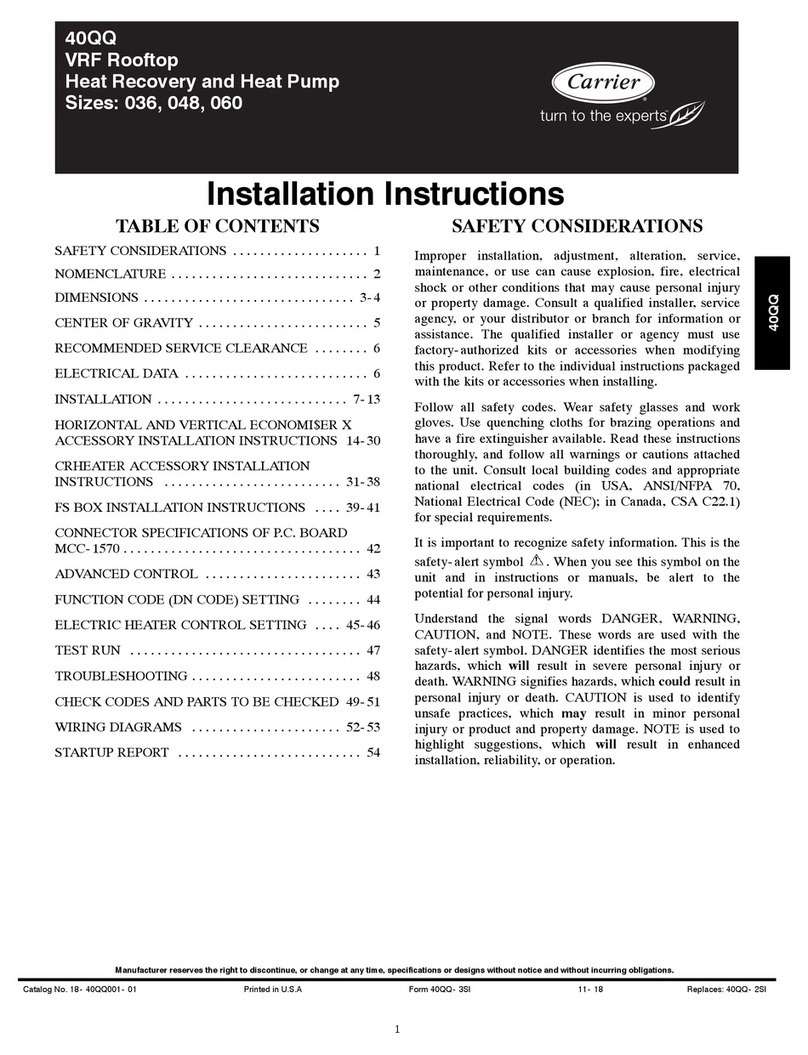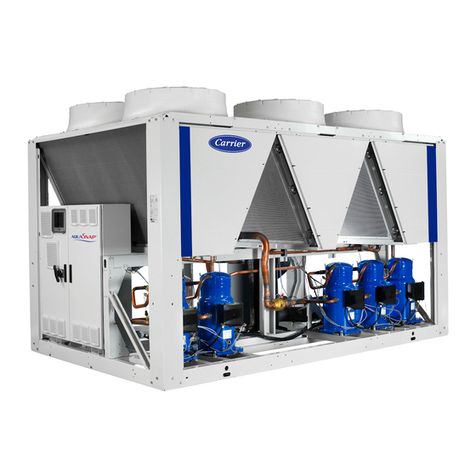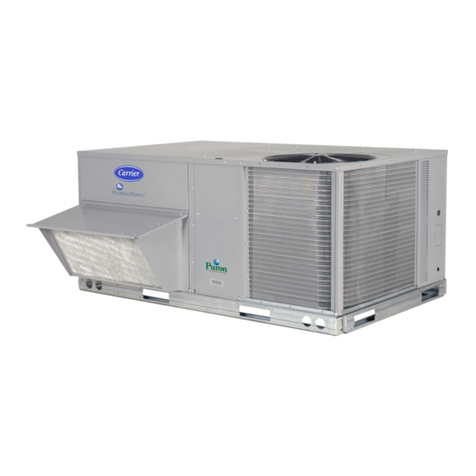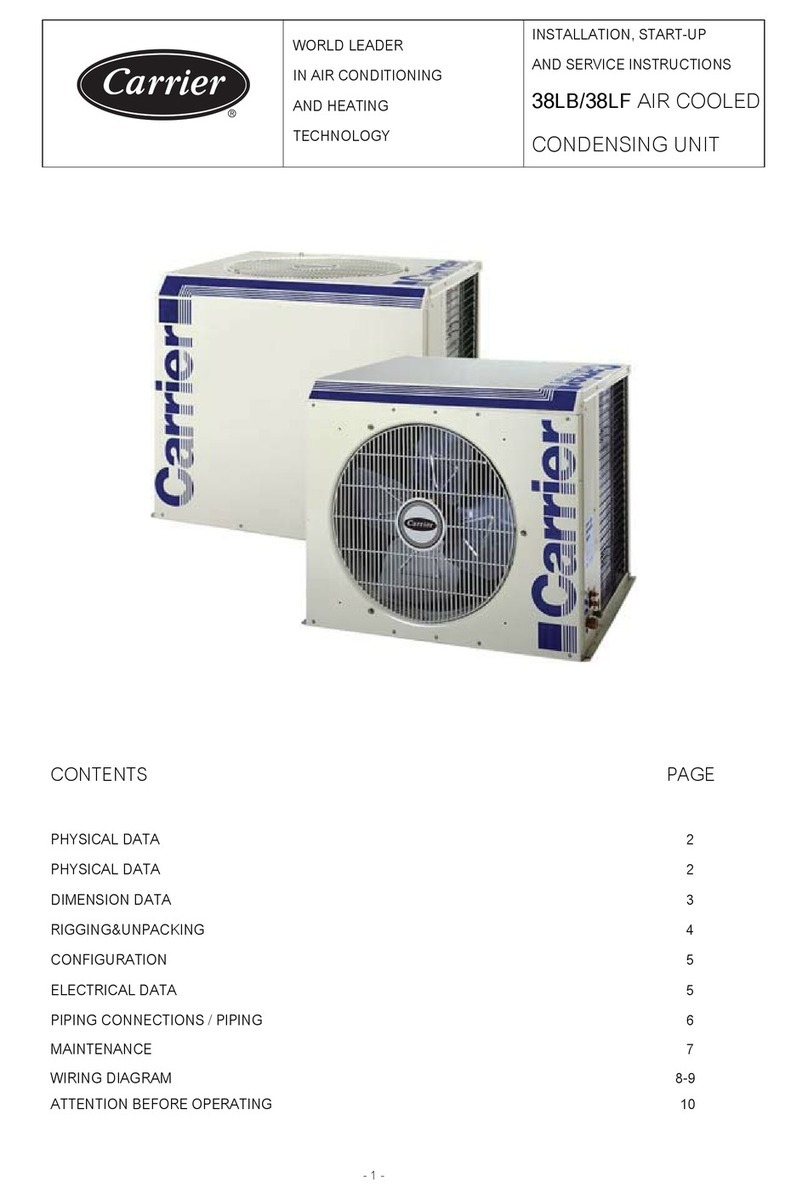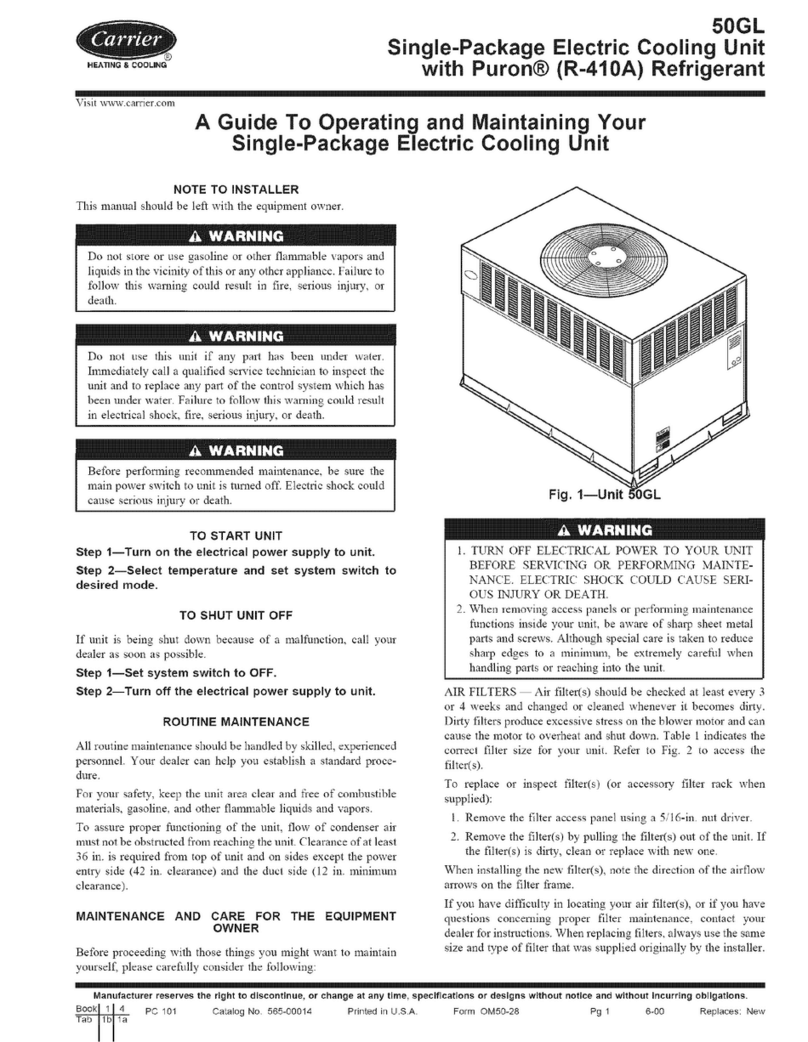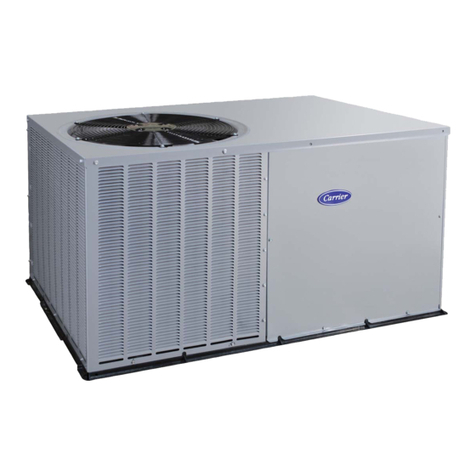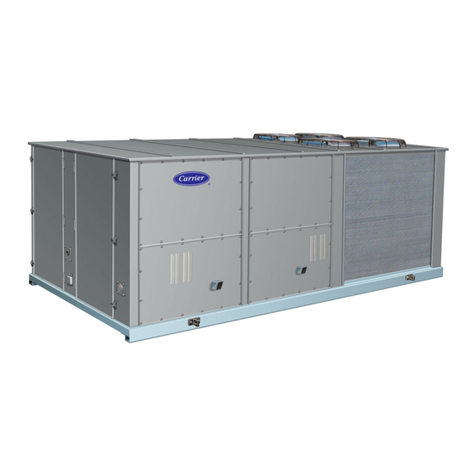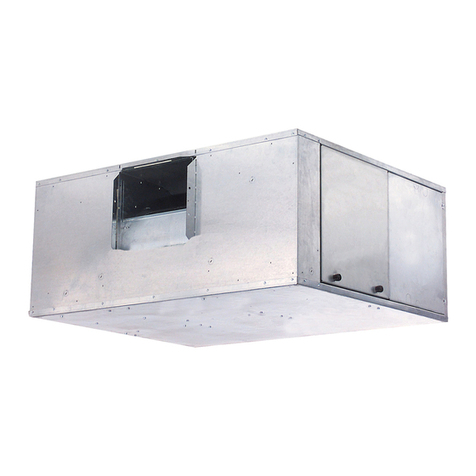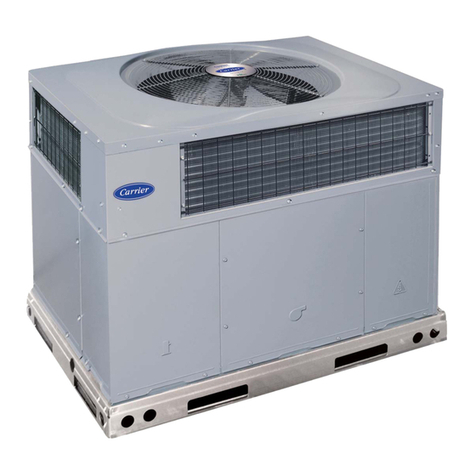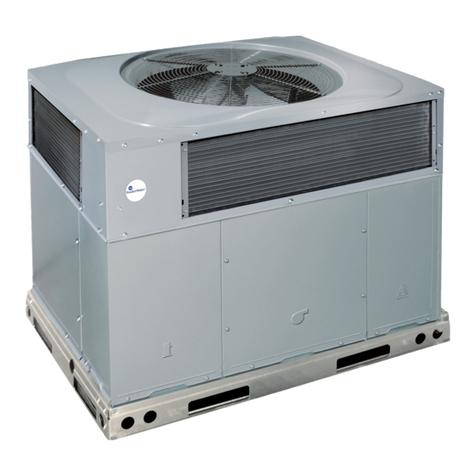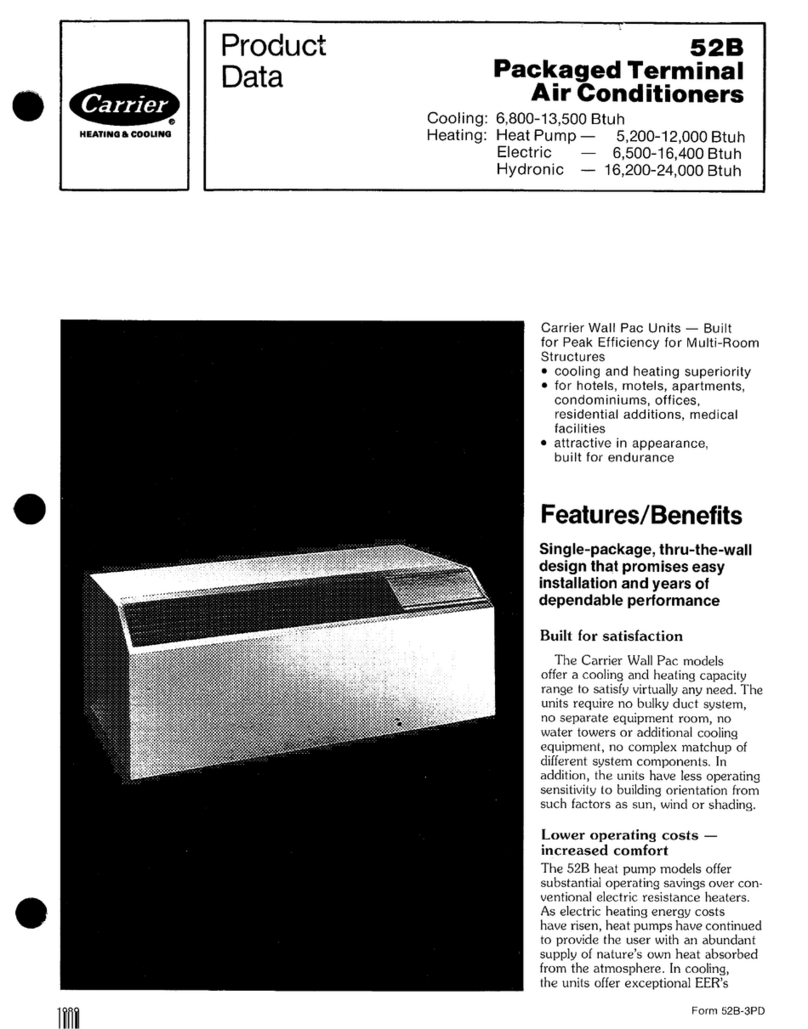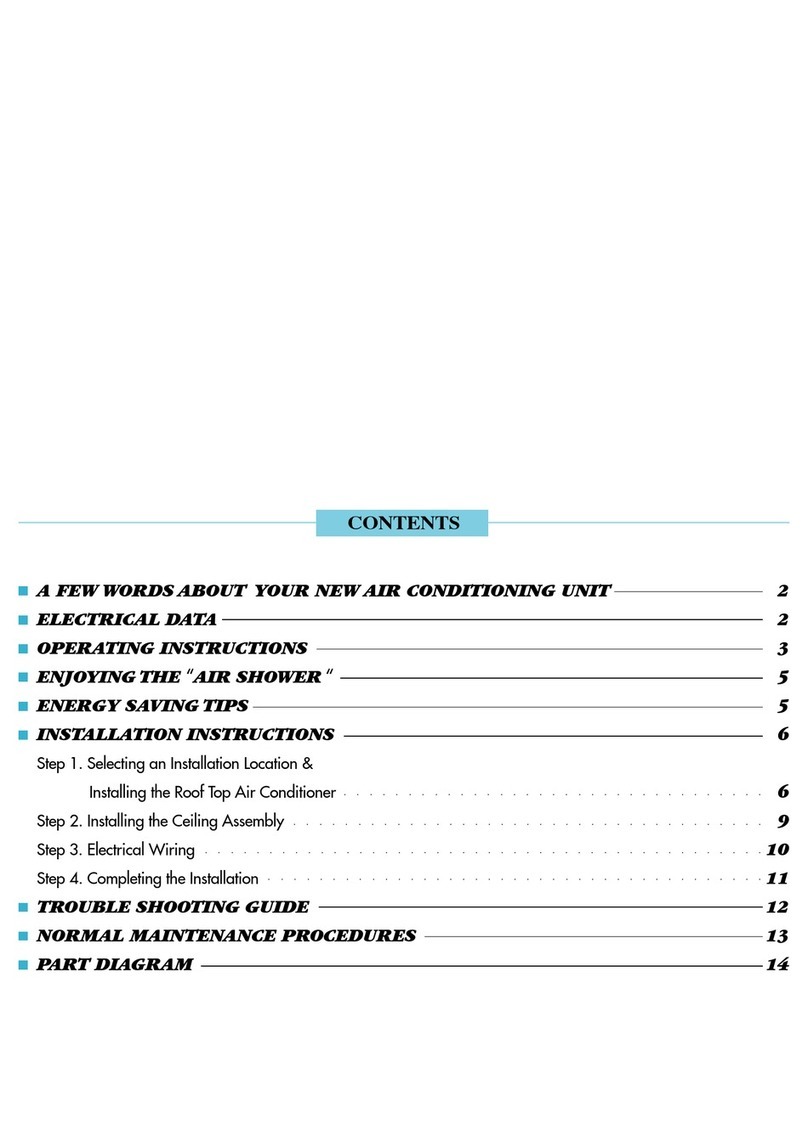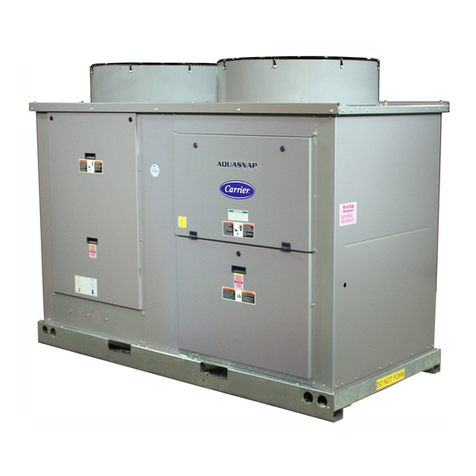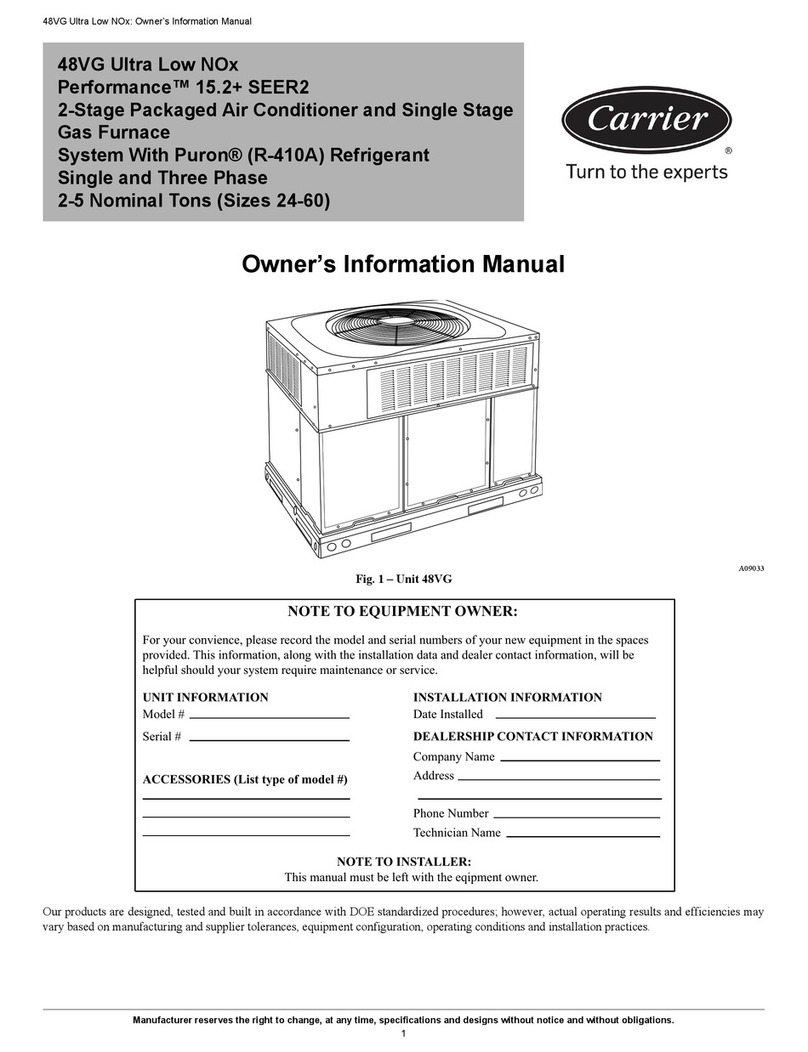Aminimumclearanceisnotrequiredaroundductwork.Cabinet
return-airstaticshallnotexceed-.25in.wg.
Step 4--Provide Clearances
The required minimum operating and service clearances are shown
in Fig. 5 and 6. Adequate combustion, ventilation and condenser air
nmst be provided in accordance with section 5.3. Air for
Combustion and Ventilation, of the National Fuel Gas Code ANSI
(American National Standards Institute) Z223.1 or applicable
provisions of local building code. In Canada, follow sections 7.2,
7.3, or 7.4 or Can/CGA. (Canadian Gas Association) B149
Installation (;odes or applicable provisions of local building code.
IMPORTANT: Do not restrict outdoor airflow. An air restriction at
either the outdoor-air inlet or the fan discharge may be detrimental
to compressor life.
The condenser fan pulls air through the condenser coil and
discharges it through the top cover. Be sure that the fan discharge
does not recirculate to the condenser coil. Do not locate the unit in
either a corner or under an overhead obstruction. The minimum
clearance under a partial overhang (such as a normal house
overhang) is 48-in. above the unit top. The maximum horizontal
extension of a partial overhang must not exceed 48-in.
Do not place the unit where water, ice, or snow from an overhang
or roof will damage or flood the unit. Do not install the unit on
carpeting or other combustible materials. Slab-mounted units
should be at least 4 in. above the highest expected water and runoff
levels. Do not use unit if it has been under water.
Step 5--Rig and Place Unit
Rigging and handling of this equipment can be hazardous for many
reasons clue to the installation location (roofs. elevated structures,
etc.).
Only trained, qualified crane operators and ground support staff
should handle and install this equipment.
When working with this equipment, observe precautions in the
literature, on tags, stickers, and labels attached to the equipment, and
any other safety precautions that might apply.
Training for operators of the lifting equipment should include, but
not be limited to. the following:
1. Application of the lifter to the load, and adjustment of the
lifts to adapt to various sizes or kinds of loads.
2. Instruction in any special operation or precaution.
3. Condition of the load as it relates to operation of the lifting
kit, such as balance, temperature, etc.
Follow all applicable safety codes. Wear safety shoes and work
gloves.
INSPECTION
The lifting/rigging bracket is engineered and designed to be
installed only on Small Packaged Products. This bracket is to be
used to rig/lift a Small Packaged Product onto roofs or other
elevated structures.
Prior to initial use. and at monthly intervals, all rigging brackets and
straps should be visually inspected for any damage, evidence of
wear. structural deformation, or cracks. Particular attention should
be paid to excessive wear at hoist hooking points and load support
areas. Brackets or straps showing any kind of wear in these areas
must not be used and should be discarded.
UNIT FALLING HAZARD
Failure to follow this warning could result in personal injury
or death.
Never stand beneath rigged units or lift over people.
PROPERTY DAMAGE HAZARD
Failure to follow this warning could result in personal
injury/death or property damage.
Rigging brackets for one unit use only. When removing a
unit at the end of its useful life. use a new set of brackets.
USE OF RIGGING BRACKET
Field Installation of Ri_in_ Bracket (if not already installed)
1. Remove unit from shipping carton. Leave top shipping skid
on the unit for use as a spreader bar to prevent the rigging
straps from damaging the unit. If the skid is not available, use
a spreader bar of sufficient length to protect the unit from
damage.
2. Remove 4 screws in unit corner posts.
3. Attach each of the 4 nmtal rigging brackets under the panel
rain lip (See Fig. 3). Use the screws removed in step 2 above
to secure the brackets to the unit.
PROPERTY DAMAGE HAZARD
Failure to follow this warning could result in personal
injury/death or property damage.
Rigging bracket MUST be under the rain lip to provide
adequate lifting.
PROPERTY DAMAGE HAZARD
Failure to follow this warning could result in personal
injury/death or property damage.
Do not strip screws when re-securing the unit. If a screw is
stripped, replace the stripped one with a larger diameter screw
(included). When straps are taut, the clevis should be a
minimum of 36 inches above the unit top cover.
Rig_in_/Liftin_ of Unit
1. Bend top of brackets down approximately 30 degrees from
the corner posts (See Fig. 4).
2. Attach straps of equal length to the rigging brackets at
opposite ends of the unit. Be sure straps are rated to hold the
weight of the unit (See Fig. 4).
3. Attach a clevis of sufficient strength in the middle of the
straps. Adjust the clevis location to ensure unit is lifted level
with the ground.
4. After unit is securely in place detach rigging straps. Remove
corner posts, screws, and rigging brackets then reinstall
screws.
After the unit is placed on the roof curb or mounting pad. remove
the top crating. On 48CE060 units only, 2 wire ties fastened to the
outdoor coils and reversing valve/accumulator assembly nmst be
cut. Remove the left and front louvered panels and corner post to
access wire ties. The wire tie to be cut on the left is located
approximately 4 in. down the tube sheet. The wire tie to be cut on
the right is located approximately 6 in. down the tube sheet.
n
